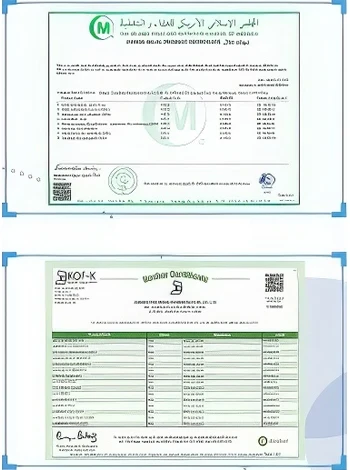



lead nitrate solution sds
Understanding Lead Nitrate Solution Safety Data Sheet Insights
Lead nitrate is an inorganic compound with the formula Pb(NO3)2. It is widely used in various industrial applications, including the production of explosives, the manufacture of colored glass, and as a reagent in laboratories. However, due to its toxic nature, it is essential to understand the safety data sheet (SDS) for lead nitrate solution to ensure safe handling and usage.
Chemical Identification and Composition
Lead nitrate solution typically appears as a colorless or pale yellow liquid. It is highly soluble in water, which makes it accessible for laboratory and industrial use. The solution is formed by dissolving lead nitrate crystals in water, resulting in a solution that can be used for various applications. The SDS provides critical information about the chemical identity, including synonyms such as lead dinitrate or plumbous nitrate, and its chemical formula.
Hazard Identification
The SDS categorizes lead nitrate as a toxic and hazardous substance. It is known to have harmful effects upon exposure, whether through skin contact, ingestion, or inhalation. The primary hazards associated with lead nitrate solution include its ability to cause acute toxicity, potential carcinogenic effects, and the risk of environmental damage. It is crucial for users to be aware of these dangers to avoid exposure and mitigate risks during handling and storage.
First Aid Measures
In the event of exposure to lead nitrate solution, immediate action is required. The SDS outlines specific first aid measures depending on the type of exposure. For skin contact, it is advised to remove contaminated clothing and rinse the affected area thoroughly with water for at least 15 minutes. If lead nitrate is ingested, it is critical not to induce vomiting and to seek medical attention immediately. Inhalation of the substance requires moving the affected individual to fresh air and seeking medical help. The swift implementation of these first aid measures can significantly alter the outcome of an exposure incident.
lead nitrate solution sds

Handling and Storage Recommendations
Proper handling and storage of lead nitrate solution are vital to prevent accidents and exposure. The SDS recommends that users wear appropriate personal protective equipment (PPE), including gloves, goggles, and lab coats, to minimize contact with the substance. Additionally, lead nitrate should be handled in a well-ventilated area or under a fume hood to reduce inhalation risks.
For storage, lead nitrate solutions should be kept in tightly sealed containers, labeled clearly to indicate the contents and associated hazards. The storage area must be cool, dry, and away from incompatible substances, including strong acids and organic materials, to prevent any hazardous reactions.
Environmental Considerations
Lead nitrate is classified as hazardous to the environment, particularly aquatic life. The SDS emphasizes the importance of preventing spills and releases into the environment. In the case of a spill, the area should be evacuated, and appropriate cleanup procedures should be followed using absorbent materials. Any waste generated must be disposed of in accordance with local regulations regarding hazardous materials to minimize ecological impact.
Conclusion
Lead nitrate solution is a valuable chemical in various industries; however, its toxic nature necessitates stringent safety measures. Understanding the safety data sheet and adhering to the recommended guidelines can significantly reduce the risks associated with its use. Proper handling, storage, and disposal practices are crucial in ensuring the safety of individuals and the environment. By fostering awareness and education about lead nitrate solution, industries can promote safer practices and mitigate the health hazards associated with this compound.
-
Why Sodium Persulfate Is Everywhere NowNewsJul.07,2025
-
Why Polyacrylamide Is in High DemandNewsJul.07,2025
-
Understanding Paint Chemicals and Their ApplicationsNewsJul.07,2025
-
Smart Use Of Mining ChemicalsNewsJul.07,2025
-
Practical Uses of Potassium MonopersulfateNewsJul.07,2025
-
Agrochemicals In Real FarmingNewsJul.07,2025
-
Sodium Chlorite Hot UsesNewsJul.01,2025










